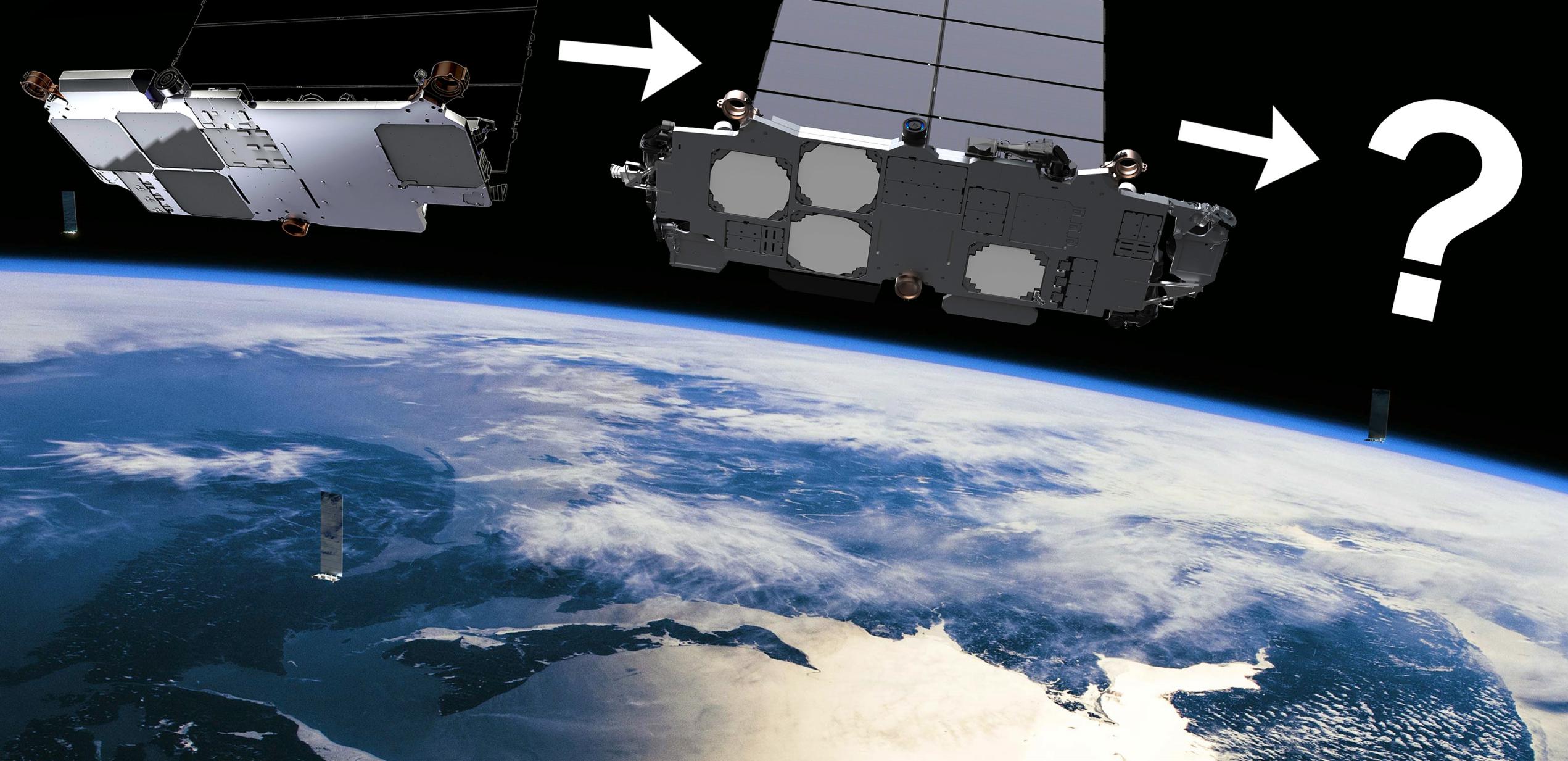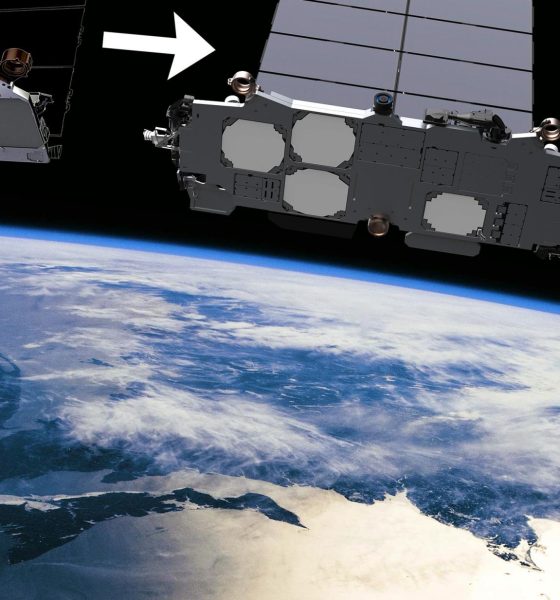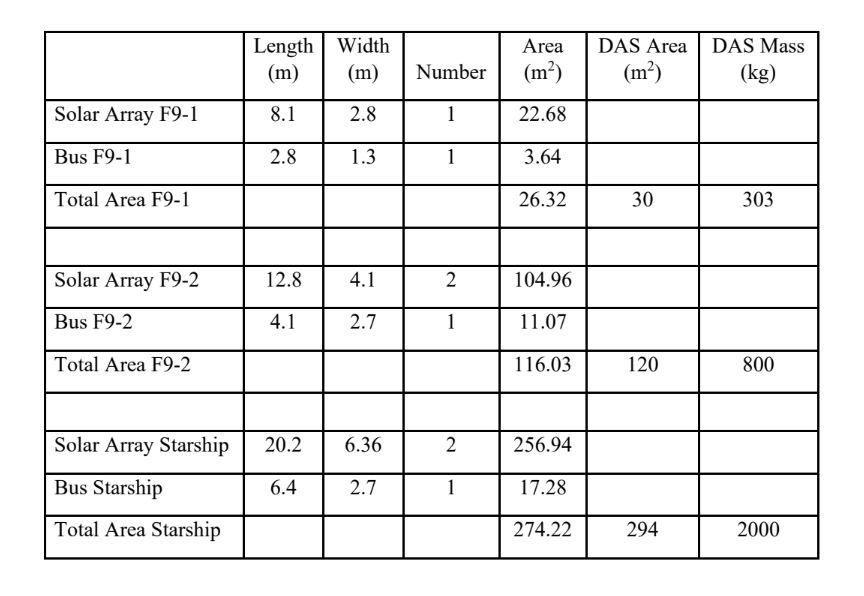

News
SpaceX might launch first Starlink Gen2 satellites next week
Update: It no longer appears that SpaceX’s last Starlink launch of the year will carry true V2 or V2 Mini satellite prototypes for its next-generation Starlink constellation. That has only deepened the layers of mystery surrounding the mission.
SpaceX has told the US Federal Communications Commission (FCC) that it plans to begin launching its first next-generation Starlink Gen2 satellites before the end of 2022.
The FCC only just granted SpaceX partial approval of its Starlink Gen2 constellation, which has been under review since May 2020, in late November 2022. Just a week or two later, in several filings asking the FCC to expedite Special Temporary Authority (STA) requests that would allow it to fully test and communicate with its first next-generation satellite prototypes, SpaceX said [PDF] that it “anticipates that it will begin launching Gen2 satellites before the end of December 2022.”
The update that's rolling out to the fleet makes full use of the front and rear steering travel to minimize turning circle. In this case a reduction of 1.6 feet just over the air— Wes (@wmorrill3) April 16, 2024
In most of the main STA requests filed in early December, SpaceX appears to be asking the FCC to add Starlink Gen2 satellites as approved points of communication for user terminals and ground stations that are already licensed. Those include its new high-performance dishes, newer base-model dishes (both fixed and in motion), and first-generation (round) dishes. While the FCC’s recent actions on Starlink do not raise confidence in its consistency, objectivity, and rationality, these requests should be shoe-ins.
SpaceX also wants permission to activate Very High Frequency (VHF) beacons that are meant to be installed on all Starlink Gen2 satellites. Those beacons would serve as a backup to existing telemetry, tracking, and command (TT&C) antennas and decrease the odds of a total loss of control by ensuring that SpaceX can remain in contact with Gen2 satellites regardless of their orientation – an ability that would obviously improve the safety of Starlink orbital operations.
Given how unusually long it took the FCC to review SpaceX’s Starlink Gen2 applications and how arbitrarily strict it was with its partial Gen2 license grant, it’s hard to say if the FCC will grant these STA requests or how long it will take if it does. SpaceX finds itself in a strange position where the FCC has given it permission to begin launching up to 7500 Starlink Gen2 satellites, but has not granted SpaceX permission to use those satellites to communicate with user terminals.
To the FCC’s credit, a constellation operator has never been ready to launch satellites less than one month after launches were approved, and it’s likely that the processes to ensure those satellites can be properly used after launch are ongoing. Additionally, because of the FCC’s arbitrary license restrictions, SpaceX is not allowed to launch or operate any Starlink Gen2 satellites outside of a narrow range of altitudes (475-580 km). After launch, Starlink Gen2 satellites will likely take around two or three months to reach those operational orbits, only after which can SpaceX begin using them in earnest. As long as the FCC approves most of SpaceX’s December 2022 STA requests, the disruption to Starlink Gen2 deployment and on-orbit testing should thus be limited.
Next week?
While SpaceX’s schedule targets can often be easily dismissed for future projects, there is evidence that SpaceX will actually attempt to launch the first Starlink Gen2 satellites before the end of the year. Earlier this month, SpaceX received permission to communicate with a Falcon 9 rocket for a mission called Starlink 5-1. One of five orbital ‘shells’ that make up SpaceX’s first-generation Starlink constellation does technically have zero satellites and is awaiting its first launch. But that shell (Group 5) is polar, meaning that its satellites will orbit around Earth’s poles, and the STA license the FCC granted indicates that this launch will be to a more equatorial inclination, which would not make sense for a Group 5 launch.
It’s thus possible that SpaceX decided to repurpose the STA for its first Starlink Gen2 launch, which the company cannot currently launch to an inclination other than 53 degrees – roughly the same trajectory indicated by the document. Starlink Gen1 has two 53-degree shells, Group 1 and Group 4, and both are nearly complete and would likely be called Starlink 1-XX or 4-XX in FCC filings. Combined with SpaceX stating in its VHF beacon STA request that initial Starlink Gen2 launches will start in “late December 2022,” and unofficial manifests indicating that SpaceX has a Starlink launch scheduled as early as December 28th, it certainly appears that first Gen2 satellites will reach orbit later this year.

More likely than not, they will be Starlink “V2 Mini” satellites – a downsized variant created to maximize the efficiency of Falcon 9 Starlink Gen2/V2 launches while SpaceX’s next-generation Starship rocket remains stuck on the ground. The Starship-optimized Starlink V2 satellites SpaceX initially hoped would be the only version reportedly weigh about 1.25 tons (~2750 lb) and measure roughly 6.5 by 2.7 meters (21 x 9 ft). According to an October 2022 FCC filing, Starlink V2 Mini satellites will still be several times larger than today’s Starlink V1.5 satellites, weighing up to 800 kilograms (~1750 lb) and measuring 4.1 by 2.7 meters (13.5 x 9 ft).
SpaceX says Starlink V2 Mini satellites will also have a pair of massive solar arrays with a total array of 120 square meters (~1300 sq ft). Assuming V2 Mini satellites are roughly as power-efficient as V1.5 satellites and use similarly efficient solar arrays, that indicates that could offer around 3-4 times more usable bandwidth per satellite. Assuming SpaceX has again found a way to use all of Falcon 9’s available performance, each rocket should be able to carry up to 21 Starlink V2 Mini satellites to low Earth orbit.

Elon Musk
Tesla CEO Elon Musk teases insane capabilities of next major FSD update

Tesla CEO Elon Musk teased the insane capabilities of the next major Full Self-Driving update just hours after the company rolled out version 14.2 to owners.
Tesla Full Self-Driving v14.2 had some major improvements from the previous iteration of v14.1.x. We were on v14.1.7, the most advanced configuration of the v14.1 family, before Tesla transitioned us and others to v14.2.
However, Musk has said that the improvements coming in the next major update, which will be v14.3, will be where “the last big piece of the puzzle finally lands.”
14.3 is where the last big piece of the puzzle finally lands
— Elon Musk (@elonmusk) November 21, 2025
There were some major improvements with v14.2, most notably, Tesla seemed to narrow in on the triggers that caused issues with hesitation and brake stabbing in v14.1.x.
One of the most discussed issues with the past rollout was that of brake stabbing, where the vehicle would contemplate proceeding with a route as traffic was coming from other directions.
We experienced it most frequently at intersections, especially four-way stop signs.
Elon Musk hints at when Tesla can fix this FSD complaint with v14
In our review of it yesterday, it was evident that this issue had been resolved, at least to the extent that we had no issues with it in a 62-minute drive, which you can watch here.
Some owners also reported a more relaxed driver monitoring system, which is something Tesla said it was working on as it hopes to allow drivers to text during operation in the coming months. We did not test this, as laws in Pennsylvania prohibit the use of phones at any time due to the new Paul Miller’s Law, which took effect earlier this year.
However, the improvements indicate that Tesla is certainly headed toward a much more sentient FSD experience, so much so that Musk’s language seems to be more indicative of a more relaxed experience in terms of overall supervision from the driver, especially with v14.3.
Musk did not release or discuss a definitive timeline for the release of v14.3, especially as v14.2 just rolled out to Early Access Program (EAP) members yesterday. However, v14.1 rolled out to Tesla owners just a few weeks ago in late 2025. There is the potential that v14.3 could be part of the coming Holiday Update, or potentially in a release of its own before the New Year.
News
Tesla Full Self-Driving v14.2 – Full Review, the Good and the Bad

Tesla rolled out Full Self-Driving version 14.2 yesterday to members of the Early Access Program (EAP). Expectations were high, and Tesla surely delivered.
With the rollout of Tesla FSD v14.2, there were major benchmarks for improvement from the v14.1 suite, which spanned across seven improvements. Our final experience with v14.1 was with v14.1.7, and to be honest, things were good, but it felt like there were a handful of regressions from previous iterations.
While there were improvements in brake stabbing and hesitation, we did experience a few small interventions related to navigation and just overall performance. It was nothing major; there were no critical takeovers that required any major publicity, as they were more or less subjective things that I was not particularly comfortable with. Other drivers might have been more relaxed.
With v14.2 hitting our cars yesterday, there were a handful of things we truly noticed in terms of improvement, most notably the lack of brake stabbing and hesitation, a major complaint with v14.1.x.
However, in a 62-minute drive that was fully recorded, there were a lot of positives, and only one true complaint, which was something we haven’t had issues with in the past.
The Good
Lack of Brake Stabbing and Hesitation
Perhaps the most notable and publicized issue with v14.1.x was the presence of brake stabbing and hesitation. Arriving at intersections was particularly nerve-racking on the previous version simply because of this. At four-way stops, the car would not be assertive enough to take its turn, especially when other vehicles at the same intersection would inch forward or start to move.
This was a major problem.
However, there were no instances of this yesterday on our lengthy drive. It was much more assertive when arriving at these types of scenarios, but was also more patient when FSD knew it was not the car’s turn to proceed.
Can report on v14.2 today there were ZERO instances of break stabbing or hesitation at intersections today
It was a significant improvement from v14.1.x
— TESLARATI (@Teslarati) November 21, 2025
This improvement was the most noticeable throughout the drive, along with fixes in overall smoothness.
Speed Profiles Seem to Be More Reasonable
There were a handful of FSD v14 users who felt as if the loss of a Max Speed setting was a negative. However, these complaints will, in our opinion, begin to subside, especially as things have seemed to be refined quite nicely with v14.2.
Freeway driving is where this is especially noticeable. If it’s traveling too slow, just switch to a faster profile. If it’s too fast, switch to a slower profile. However, the speeds seem to be much more defined with each Speed Profile, which is something that I really find to be a huge advantage. Previously, you could tell the difference in speeds, but not in driving styles. At times, Standard felt a lot like Hurry. Now, you can clearly tell the difference between the two.
It seems as if Tesla made a goal that drivers should be able to tell which Speed Profile is active if it was not shown on the screen. With v14.1.x, this was not necessarily something that could be done. With v14.2, if someone tested me on which Speed Profile was being used, I’m fairly certain I could pick each one.
Better Overall Operation
I felt, at times, especially with v14.1.7, there were some jerky movements. Nothing that was super alarming, but there were times when things just felt a little more finicky than others.
v14.2 feels much smoother overall, with really great decision-making, lane changes that feel second nature, and a great speed of travel. It was a very comfortable ride.
The Bad
Parking
It feels as if there was a slight regression in parking quality, as both times v14.2 pulled into parking spots, I would have felt compelled to adjust manually if I were staying at my destinations. For the sake of testing, at my first destination, I arrived, allowed the car to park, and then left. At the tail-end of testing, I walked inside the store that FSD v14.2 drove me to, so I had to adjust the parking manually.
This was pretty disappointing. Apart from parking at Superchargers, which is always flawless, parking performance is something that needs some attention. The release notes for v14.2. state that parking spot selection and parking quality will improve with future versions.
Any issues with parking on your end? 14.1.7 didn’t have this trouble with parking pic.twitter.com/JPLRO2obUj
— TESLARATI (@Teslarati) November 21, 2025
However, this was truly my only complaint about v14.2.
You can check out our full 62-minute ride-along below:
Elon Musk
SpaceX issues statement on Starship V3 Booster 18 anomaly
The incident unfolded during gas-system pressure testing at the company’s Massey facility in Starbase, Texas.

SpaceX has issued an initial statement about Starship Booster 18’s anomaly early Friday. The incident unfolded during gas-system pressure testing at the company’s Massey facility in Starbase, Texas.
SpaceX’s initial comment
As per SpaceX in a post on its official account on social media platform X, Booster 18 was undergoing gas system pressure tests when the anomaly happened. Despite the nature of the incident, the company emphasized that no propellant was loaded, no engines were installed, and personnel were kept at a safe distance from the booster, resulting in zero injuries.
“Booster 18 suffered an anomaly during gas system pressure testing that we were conducting in advance of structural proof testing. No propellant was on the vehicle, and engines were not yet installed. The teams need time to investigate before we are confident of the cause. No one was injured as we maintain a safe distance for personnel during this type of testing. The site remains clear and we are working plans to safely reenter the site,” SpaceX wrote in its post on X.
Incident and aftermath
Livestream footage from LabPadre showed Booster 18’s lower half crumpling around the liquid oxygen tank area at approximately 4:04 a.m. CT. Subsequent images posted by on-site observers revealed extensive deformation across the booster’s lower structure. Needless to say, spaceflight observers have noted that Booster 18 would likely be a complete loss due to its anomaly.
Booster 18 had rolled out only a day earlier and was one of the first vehicles in the Starship V3 program. The V3 series incorporates structural reinforcements and reliability upgrades intended to prepare Starship for rapid-reuse testing and eventual tower-catch operations. Elon Musk has been optimistic about Starship V3, previously noting on X that the spacecraft might be able to complete initial missions to Mars.








